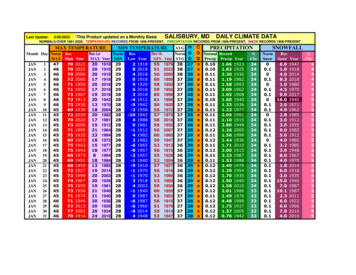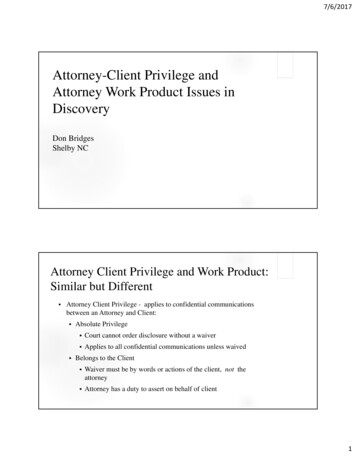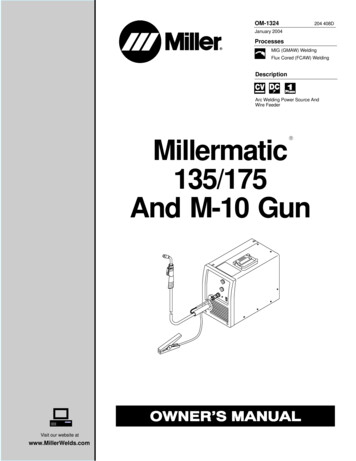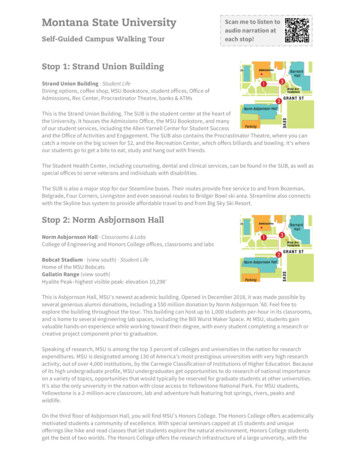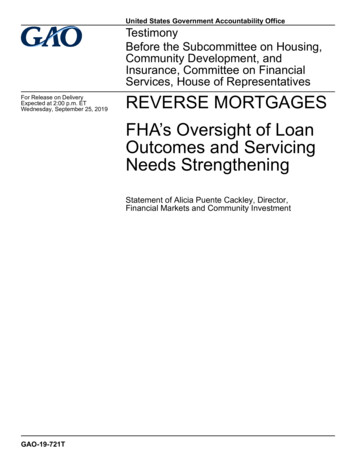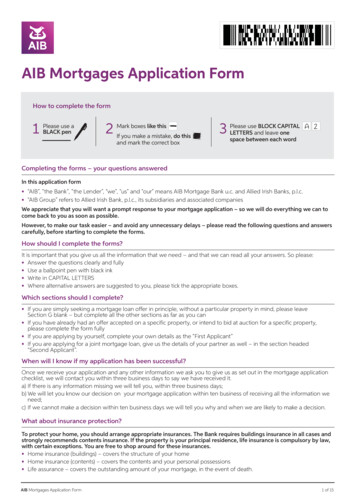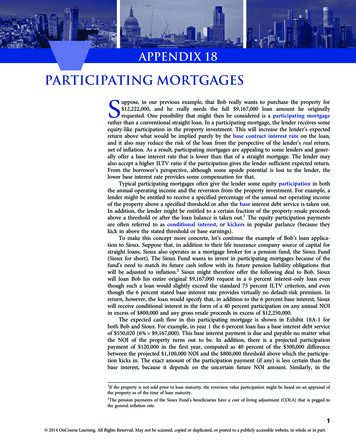
Transcription
APPENDIX 18PARTICIPATING MORTGAGESSuppose, in our previous example, that Bob really wants to purchase the property for 12,222,000, and he really needs the full 9,167,000 loan amount he originallyrequested. One possibility that might then be considered is a participating mortgagerather than a conventional straight loan. In a participating mortgage, the lender receives someequity-like participation in the property investment. This will increase the lender’s expectedreturn above what would be implied purely by the base contract interest rate on the loan,and it also may reduce the risk of the loan from the perspective of the lender’s real return,net of inflation. As a result, participating mortgages are appealing to some lenders and generally offer a base interest rate that is lower than that of a straight mortgage. The lender mayalso accept a higher ILTV ratio if the participation gives the lender sufficient expected return.From the borrower’s perspective, although some upside potential is lost to the lender, thelower base interest rate provides some compensation for that.Typical participating mortgages often give the lender some equity participation in boththe annual operating income and the reversion from the property investment. For example, alender might be entitled to receive a specified percentage of the annual net operating incomeof the property above a specified threshold or after the base interest debt service is taken out.In addition, the lender might be entitled to a certain fraction of the property resale proceedsabove a threshold or after the loan balance is taken out.1 The equity participation paymentsare often referred to as conditional interest, or kickers in popular parlance (because theykick in above the stated threshold or base earnings).To make this concept more concrete, let’s continue the example of Bob’s loan application to Sioux. Suppose that, in addition to their life insurance company source of capital forstraight loans, Sioux also operates as a mortgage broker for a pension fund, the Sioux Fund(Sioux for short). The Sioux Fund wants to invest in participating mortgages because of thefund’s need to match its future cash inflow with its future pension liability obligations thatwill be adjusted to inflation.2 Sioux might therefore offer the following deal to Bob. Siouxwill loan Bob his entire original 9,167,000 request in a 6 percent interest-only loan eventhough such a loan would slightly exceed the standard 75 percent ILTV criterion, and eventhough the 6 percent stated base interest rate provides virtually no default-risk premium. Inreturn, however, the loan would specify that, in addition to the 6 percent base interest, Siouxwill receive conditional interest in the form of a 40 percent participation on any annual NOIin excess of 800,000 and any gross resale proceeds in excess of 12,250,000.The expected cash flow in this participating mortgage is shown in Exhibit 18A-1 forboth Bob and Sioux. For example, in year 1 the 6 percent loan has a base interest debt serviceof 550,020 (6% 9,167,000). This base interest payment is due and payable no matter whatthe NOI of the property turns out to be. In addition, there is a projected participationpayment of 120,000 in the first year, computed as 40 percent of the 300,000 differencebetween the projected 1,100,000 NOI and the 800,000 threshold above which the participation kicks in. The exact amount of the participation payment (if any) is less certain than thebase interest, because it depends on the uncertain future NOI amount. Similarly, in the1If the property is not sold prior to loan maturity, the reversion value participation might be based on an appraisal ofthe property as of the time of loan maturity.2The pension payments of the Sioux Fund’s beneficiaries have a cost of living adjustment (COLA) that is pegged tothe general inflation rate.1 2014 OnCourse Learning. All Rights Reserved. May not be scanned, copied or duplicated, or posted to a publicly accessible website, in whole or in part.
0345%BER @ market45%209% 459,980 690,020 550,02044%209% 459,980 690,020 140,000 550,02044%209% 459,980 690,020 140,00044%218% 489,980 710,020 160,000 550,020 1,200,00043%218% 489,980 710,020 160,000 550,020 1,200,000 0 0 1,200,000 12.00 0.00 12.00743%218% 489,980 710,020 160,000 550,020 1,200,000 0 0 1,200,000 12.00 0.00 12.00 12.879 0 550,020 550,020 0 0 1,299,428 12.99 0.00 12.99 13.261042% 297,712236%41%42% 4,079,205 10,214,503 199,771 9,717,020 14,293,709236% 549,637221% 749,791 717,306 199,771 1,024,092 167,286 1,299,428 0 275,000 1,250,000 306,786 1,299,428 12.99 0.00 12.99 13.12 1,218,214 12.18 0.81 12.99 12.998EXHIBIT 18A-1 Participating Mortgage for 9,167,000 at 6% (Interest-Only), with 40% Equity Kickers (over 800,000 NOI and 12,250,000 Resale)200% 429,980DCR 670,020EBTCF 550,020 140,000 550,020 120,000Base interest debt serviceParticipationLoan CFs 1,150,000 1,100,000PBTCFParticipation 1,150,000 0 0 1,200,000 12.00 0.00 12.006 12.74 9,167,000 0 0 1,150,000 11.50 0.00 11.505 12.61 12,994,280 1,150,0004 12.49Less OLB 0 0 1,150,000 11.50 0.00 11.50 12.36Reversion @ 10% cap 0 0 0 11.50Lease commissionNOI/SF 0.00 11.50Tenant improvements 11.00Vacancy allowance 1,150,000 0.00Property rent (net)2 12.24 1,100,000 11.00Market rent (net)/SFNOI1 12.12Year 1,299,428 12.99 0.00 12.99 13.39112Commercial Real Estate Analysis and Investments, 3e 2014 OnCourse Learning. All Rights Reserved. May not be scanned, copied or duplicated, or posted to a publicly accessible website, in whole or in part.
APPENDIX 18PARTICIPATING MORTGAGES3reversion cash flow projected for year 10, 297,712 of participation proceeds are projectedfor the lender in addition to the 9,167,000 loan principal balance. This is computed as40 percent of the 744,280 difference between the projected gross sale proceeds of 12,994,280and the 12,250,000 base for the reversion kicker.3Why does this proposed 6 percent participating mortgage look advantageous to Sioux?In this case, there are at least two reasons. First, the equity participation provides Sioux withan expected yield at least as great as what they could receive from a straight mortgage in thecurrent market. This can be seen by computing the IRR of the loan cash flows, shown inExhibit 18A-1, assuming an initial (year-0) cash disbursement of 9,167,000. The IRR to theexpected cash flow stream (including the participation payments) is 7.90 percent, which isslightly greater than the 7.87 percent yield prevailing in the market for straight mortgages.4While this slightly greater expected return might not be sufficient to compensate Siouxfor the extra default risk in a 79 percent ILTV mortgage if it were a straight loan, the participating loan actually reduces another type of risk, namely, inflation risk. If future inflationturns out to be greater than expected, Sioux’s pension liabilities will be greater than expected,because of the COLA adjustment in their beneficiaries’ pension plans. With a straight mortgage, Sioux’s cash inflows would not change as a function of what future inflation turned outto be. However, with the participating mortgage, if future inflation turns out to be greaterthan expected, then Sioux’s participation cash flows likely will turn out to be greater thanexpected, at least as regards the pure effect of inflation alone. This is because Bob’s officebuilding should be able to increase its nominal rents more in the long run if there is moreinflation. This would probably increase both the annual and reversion participation paymentsto Sioux. Thus, the participating mortgage provides a bit of a hedge against inflation risk.As a result of the inflation risk consideration, the 6 percent participating mortgage maywell provide Sioux with a sufficient expected return.5 But should Bob accept the offer? Toanswer this question, let’s examine the expected 10-year IRR on Bob’s levered equity investment with the participating mortgage.The EBTCF figures in Exhibit 18A-1 are Bob’s expected cash flows after taking out theprojected mortgage participation payments. With a 9,167,000 loan and a property price of 12,222,000, Bob’s up-front equity investment will be 3,055,000. This results in a going-inlevered IRR of 12.97 percent for Bob. Suppose, instead, Bob got the loan he originally askedfor, the interest-only straight mortgage at 7.87 percent. Under the same underlying propertycash flow projection as in Exhibit 18A-1, this would result in the EBTCF projection shown inExhibit 18-7b in the textbook. Given the initial 3,055,000 investment, this cash flow streamhas an expected IRR of 12.83 percent, slightly less than what Bob could expect with the participating mortgage. This is because the debt component of the participating mortgage, thatis, the debt service payments attributable to the 6 percent base interest rate, provides Bobwith greater positive leverage in his equity investment than the 7.87 percent loan would do.Of course, this does not mean that Bob is getting something for nothing in Sioux’sproposal. The nature of Bob’s risk has changed. The other component of the participatingmortgage (the equity component) gives away some of Bob’s upside expectations, but none3The annual and reversion kicker percentages need not be the same. For example, the kicker might be 30% on theNOI and 50% on the resale. Note also that in a properly constructed participating mortgage the equity participationpayments (on both the annual income and reversion proceeds) are tax deductible to the borrower. The IRS classifiesparticipation payments as interest, not dividends, because the lender does not have governing control over theproperty.4However, this is only an approximation. To get more technical, the 7.90% estimate here is actually biased slightly onthe low side, because the cash flow from the kickers results from a probability distribution that is truncated frombelow, giving it a mean that is higher than what is implied by the expected cash flows used in Exhibit 18A-1 (reflecting a nontruncated cash flow probability distribution) as the basis for computing the projected kicker cash flows.A more complete analysis would need to specify the entire cash flow probability distribution. To be even more complete, a ‘‘real options’’ based analysis could be performed, using methods similar to those described in Chapter 27.5Obviously, Sioux would consider the typical interest rates and kickers that are prevailing in the current market forparticipating mortgages, so as not to make an offer that is below market. In practice, however, the market for participating mortgages is often quite thin, and it may be difficult to identify loans that are exactly comparable in terms ofrisk and expected return. Thus, market rates and terms must be estimated approximately. 2014 OnCourse Learning. All Rights Reserved. May not be scanned, copied or duplicated, or posted to a publicly accessible website, in whole or in part.
4Commercial Real Estate Analysis and Investments, 3eof Bob’s downside risk. So Bob’s overall equity risk under the participating loan is a bitskewed, unfavorably for Bob. Nevertheless, Bob may well find Sioux’s proposal agreeable.6Although participating mortgages are often a successful solution to otherwise intractableunderwriting problems, they do raise some difficult issues that need to be carefully considered. For one thing, there are legal liability and administrative issues not raised by straightloans that the lender needs to consider carefully. For example, the lender will need to beable to audit the borrower’s accounts to make sure income and expenses are being recordedproperly so that the lender is getting its fair share. How will the lender know if the borroweris padding expenses so as to effectively reduce the lender’s participation? Do participatingmortgages exacerbate potential problems of moral hazard for the lender? (Moral hazard isthe term used to describe the situation in which the party in control of a decision can benefitfrom a course of action that harms the other party.) For example, does the participatingmortgage give the property owner an incentive to skimp on capital improvement expenditures? Such expenditures may be borne entirely by the owner (if the lender’s participation isbased on NOI, before CI expenditures are taken out), yet they enhance property value andfuture rents that the owner must share with the lender.7KEY TERMSinflation riskkickersmoral hazardbase contract interest ratebase (threshold) cash flowconditional interestparticipating mortgageparticipationSTUDY QUESTIONS1. What are the pros and cons of participating mortgages from both the borrower’s and lender’s perspectives, as compared to otherwise similar straight mortgage debt?2. (Participating Mortgage) Bob is thinking of buying a property whose five-year net cashflow projection is shown in the following table (occurring at the end of each year). Inaddition, at the end of year 5, the property is expected to be worth 10 times its net cashflow that year.Year 1 1,000,000Year 2 1,100,000Year 3 1,100,000Year 4 800,000Year 5 1,200,000Bob can purchase this property for its 11.4 million market value with an 8 millionloan. He has two choices of loans (both five-year interest-only loans with annual payments inarrears). Loan 1 is a straight 8% loan. Loan 2 is a participating mortgage with 7% base6Although it is not much of an issue in Bob’s case, another reason participating mortgages are appealing in someinstances is that the lower base interest rate reduces pressure on the initial income coverage, as indicated by the initialDCR, for example. This is most important in situations in which the property net operating income can be realistically expected to grow significantly over the life of the loan. For this reason, participating mortgages are often mostappealing when inflation expectations have driven up interest rates, and they may serve much the same purpose asthe graduated payment mortgage (GPM) or the adjustable rate mortgage (ARM) with a low initial teaser rate, as wasdescribed in Chapter 17.7Riddiough (1994) pointed out that participating mortgages may also raise adverse selection problems. 2014 OnCourse Learning. All Rights Reserved. May not be scanned, copied or duplicated, or posted to a publicly accessible website, in whole or in part.
APPENDIX 18PARTICIPATING MORTGAGES5interest and 45% kickers on any annual cash flow above 1 million and any resale proceeds (orproperty appraised value at maturity) above 11.4 million.a. What is the property market’s expected return (going-in IRR) to the underlyingproperty?b. Ignoring default risk, what is the expected return on loan 1?c. On loan 2?d. On Bob’s levered equity with loan 1?e. On Bob’s levered equity with loan 2? 2014 OnCourse Learning. All Rights Reserved. May not be scanned, copied or duplicated, or posted to a publicly accessible website, in whole or in part.
12,222,000, and he really needs the full 9,167,000 loan amount he originally requested. One possibility that might then be considered is a participating mortgage rather than a conventional straight loan. In a participating mortgage, the lender receives some equity-like participation in the property investment. This will increase the lender .

